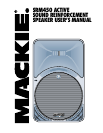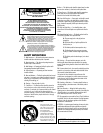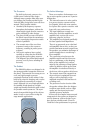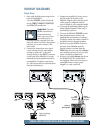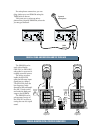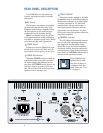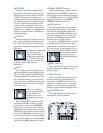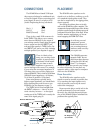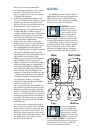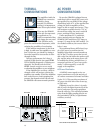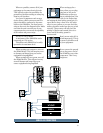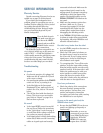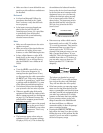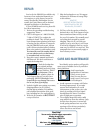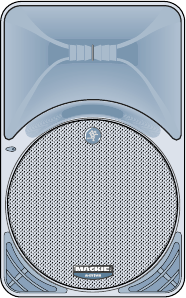
5
The Crossover
The built-in electronic crossover is a
24 dB/octave Linkwitz-Riley design.
Although more expensive than other cross-
over designs, the benefits provided by the
Linkwitz-Riley design have been well docu-
mented. These benefits include:
• Absolutely flat frequency response
throughout the bandpass, without the
characteristic ripple near the crossover
point exhibited by other designs.
• The sharp 24 dB per octave roll-off of
the filters ensures that the transducers
aren’t reproducing frequencies outside
of their capabilities.
• The acoustic sum of the two driver
responses is unity at the crossover
frequency, resulting in perfect power
response.
• Our heroic engineers have worked
carefully to ensure that the SRM450
also provides perfect phase response.
This diligence has yielded phenomenal
accuracy, even if you are standing 20
feet away.
The Cabinet
The SRM450 cabinet was designed to be
the strongest molded composite cabinet on
the planet. This material is as strong as con-
crete, and rigid enough to prevent
unwanted vibrations in the cabinet. It has
built-in fly points for hanging, and a socket
in the bottom for mounting on a tripod
stand. Although it is an exceptional choice
for installed sound situations, its light
weight and durable finish also make it ideal
for portable sound system use. The asym-
metrical trapezoidal design of the cabinet
makes it easy to use as a floor wedge for
stage monitor applications.
The Active Advantage
There are a number of advantages to us-
ing an active speaker system over a passive
loudspeaker:
• The internal crossover is active, and its
low power circuitry operates on line-
level signals. It does not waste speaker-
level power like a passive crossover with
large coils, caps, and resistors.
• The input signals are crossed over
before they reach the amplifiers, so each
amplifier only receives the correct
frequency range for its driver.
• The amplifiers are designed specifically
for these speaker load impedances.
There is no guesswork as to what load
each amplifier has to drive, so they can
provide maximum acoustic output from
the speakers, yet minimize the danger of
speaker damage due to overdriving a
lesser amplifier.
• The connecting wires between the
amplifier outputs and the drivers are
kept to a minimum, so the damping
factor of the amplifier isn’t compro-
mised by the resistance of long speaker
cables. In addition, all the power from
the amplifier is transferred directly to
the drivers with no speaker cable losses.
• The acoustic sum of the outputs from
the two drivers is optimized electroni-
cally, as well as physically, so the
amplitude response is flat and there is
no lobing error.
• The presence of active circuits within
the speaker cabinet allow the designer
to add on extra details, such as a high
quality mic/line input section and
optional accessory modules.
In short, all the complex interconnected
components in the system are designed to
work in harmony with each other to pro-
duce the best possible sound. (Even for
Uncle Bert’s star performance on spoons!)



